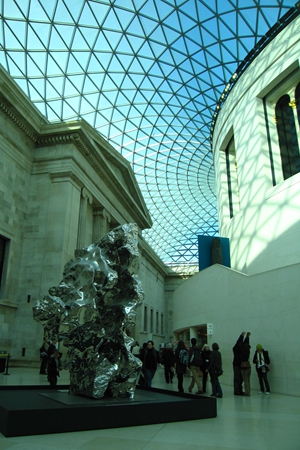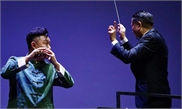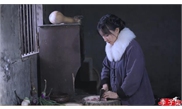ARTS / CULTURE & LEISURE
Chinese exhibits entrance visitors globally
Cultural fusion

Great Court of the British Museum in London, UK Photo: CNSphoto
Numerous Chinese cultural and artistic treasure troves were exhibited across the world during the past year. Enchanting sculptures, calligraphy, ceramics, and imperial chattels capturing the grace of the Chinese civilization shined in the global arena and facilitated cultural exchanges.
Beauty of Chinese treasures
Last December, New Zealand's national museum in Wellington initiated a four-month-long exhibition of the Terracotta Army, an imperial icon of ancient Chinese art and civilization, themed "Terracotta Warriors: Guardians of Immortality."
On the opening day of the exhibition, enthusiastic residents queued up early to espy the life-size clay models of Chinese soldiers, horses, and chariots that once guarded the tomb of Emperor Qinshihuang about 2,000 years ago.
More than 160 pieces of ancient Chinese antiques made of gold, jade, and bronze were also put on display, providing visitors a glimpse of the long-standing charm of Asian civilization.
It was a "once in a lifetime" experience, said Rebecca Rice, the exhibition's curator. At the opening ceremony, New Zealand Tourism Minister Kelvin Davis said the exhibition "will encourage more New Zealanders to continue the journey to engagement and understand China, one of our most important partners."
Exhibits showcasing the lives of emperors and empresses of China's Qing Dynasty were also displayed in museums in Washington D.C. and Moscow in the first half of 2019. There were over 100 exhibits, including imperial portraits, narrative paintings, furniture, jewelry and costumes from Beijing's Palace Museum.
Elena Gagarina, general director of the Moscow Kremlin Museums, said the exhibition "Treasures from the Palace Museum: The Flourishing of China in the 18th Century" in Moscow was a success. Russian visitors thoroughly appreciated these exhibits from China, she added.
New techniques to display relics
Museums have explored new techniques and innovative ways to induce more fun to visitors' experience and ensure the Chinese cultural relics leave them with an indelible experience.
On Jan 30, ahead of the Chinese Spring Festival, a creatively choreographed Chinese cultural exhibition commenced at the Guimet National Museum of Asian Arts in Paris, offering people an interactive and immersive experience of Chinese New Year customs and rituals.
Through a WeChat app on a smartphone, visitors could customize the designs and order scarves with exquisite patterns of ancient paintings from the Mogao Grottoes, a renowned UNESCO World Heritage Site in northwest China's Gansu Province, and drape their self-designed scarves to celebrate the traditional Chinese festival.
Receiving red packets of "lucky money" from elderly family members, a Chinese New Year custom, was digitally presented at the exhibition through the mobile payment gateway.
In early 2019, Chinese tech giant Tencent and France's union of national museums (RMN) signed a memorandum of strategic cooperation to enhance cultural exchanges, traditional cultural inheritance, and innovation.
Under this cooperative framework, the two sides unveiled several exhibitions and digitally presented the Chinese treasures collected by French museums, making it available online.
Patrick Dambron, chairman of France-China Art and Culture Academy (AFCAC), said Internet-oriented technologies have enabled cultural heritage to regain its vitality and he encouraged younger generations to inject vigor into contemporary and traditional arts and culture.
Exchanges for mutual development
Chinese and foreign museums have been forging exchanges to facilitate dialogue between civilizations and foster people's understanding of and engagement with cultures that interest them.
The British Museum opened an online souvenir store on Alibaba's Tmall, an e-commerce platform, in July 2018. In just over a year, the shop has garnered more than 1.04 million followers.
Last December, the British Museum inked a three-year deal with Tmall to expand their partnership beyond sales and include marketing, localized content, and product licensing.
An important mission of the museum is to share the exhibits with the rest of the world, said British Museum Chairman Richard Lambert, adding that the collaborative project brings them closer to the Chinese people.
Chinese museums have signed deals with their counterparts in countries like Australia, Russia, and Greece to enhance cooperation in the exhibition, protection, and scientific research of cultural relics.
The Acropolis Museum in Athens, for instance, has established partnerships with the Shanghai Museum and the Palace Museum for exhibitions and art workshops.
Dimitrios Pandermalis, president of the Acropolis Museum, said the collaboration between the Acropolis Museum and Palace Museum is excellent and fruitful, adding that such synergies bring the two cultures closer and broaden Sino-Greek ties.
He also anticipated that such dialogues between the two cultures would pave the way for sharing of experience in many more fields of expertise.



